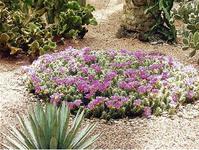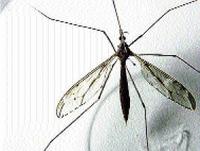
Blooming cacti are most handsome. - Photo by Rita Elliott
Most cacti bloom - richly - once a year and their display compensates for the nine or 10 months they spend doing little except looking prickly.
To make sure your cacti will treat you to repeat blooming shows, follow these basic pointers:
Soil: Although these gems grow in arid regions, the soil in which they are found is not pure sand. It contains at least a little humus in the shape of old grasses, animal droppings, twigs and dead plants.
Keep it simple
If you prefer your cacti growing in pots, keep it simple. You can buy ready-made cactus mix from your nursery. Should you prefer to make your own, here is a simple formula:
One part soil-less mix (light on the peat, please), plus one part coarse builder's sand (not beach sand), plus 1/2 part coarse perlite (not vermiculite).
In short: What you want is a medium that is porous, well draining, not too acidic, light.
Watering: Water once a week - April through September, but only once every three or four weeks, October through March. Remember, this is just a guideline which you may have to adjust to your own situation.
Important: Try not to wet the plant itself.
Light: If they are to flower, cacti do need light. In summer, they need less than in winter. If potted, put them in a sunny spot on your porch or terrace.
Nutrients: Like most plants, cacti grow and flower best if they receive nutrients, and they are fussy in this respect.
Fertilising
Do not fertilise through the dormant season, nor for the first year after re-potting. Most important, do not use a fertiliser high in nitrogen. This may cause too fast a growth, or too much water retention, leading to rot. Phosphorus and potash help in growing healthy roots and producing flowers.
Dormant period: Most plants, like people, need rest. Cactus is no exception. This is why you slow down the watering and stop the fertilising during cool months. Light requirements at this time are also lower.
Without this dormant period, you may have healthy plants ... but no flowers!
Controlling mosquitoes

Mosquitoes can carry deadly diseases. - Contributed
Mosquito are a year-round problem in hot Jamaica, maybe even more so in the summer. Be on the alert non-stop. Always remember that mosquito larvae live in wet places.
Any standing water will encourage a population surge. Sometimes, rainfall stays in the crotch of a tree, a discarded tyre, or even in an old pot, and give time enough for the larvae to hatch and turn into adults.
Debris near the garden
Try to get rid of any debris near the garden where water can accumulate, even for a few days. Remember to empty birdbaths every day or two and refill with fresh water. Bouquet of fresh-cut flowers or greenery growing in water will also acquire floating larvae. Renew the water promptly.
Diplomatic effort
This being done, a little diplomatic effort is in order. Put a bright smile on your face and pay a visit to your neighbours and suggest (tactfully) they discard any debris that might be harbouring the pest.
Protect yourself with repellents and avoid spending time in the garden in the morning and evening hours, when mosquitoes are most active.
Mosquitoes are not a mere nuisance, they can carry deadly diseases, and you don't want you or your family and friends to become a victim.
We are all in this together!
In praise of earthworms
Earthworms do a wonderful job of improving the soil structure and turning subsoil into topsoil. One thing you can do to encourage them is to use organic mulches, such as leaves. Tilling less often will also help to increase your earthworm population.
Personally, I bribe my gardener (who is from country) to go on the hunt up there and bring me earthworms in a little box. At first, he thought I was a Mad Hatter ...

